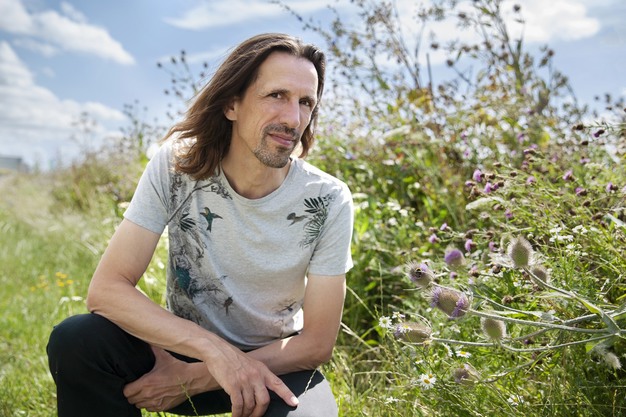As a new lecturer in Living Plant Cultivation Systems at Inholland University of Applied Sciences, Frank van der Helm wants future growers to think critically about the use of methods and means that have a major impact on biological life in the greenhouse. Especially if growers want to achieve a resilient crop, they desperately need all micro-organisms. As a grower's son, he wants growers to answer the question for themselves, "What is the impact of my intervention?" It is also important that they gain as much knowledge as possible about biological support for the plant in resilient cropping. Frank: "Resilient growing and destructive interventions such as disinfection, broad-spectrum chemicals, and biocides don't go well together. Try to minimize those interventions so that life remains in the greenhouse."
Frank explains his vision: "If we want organic products to have a role in our ecosystem, we need to learn how to make them function as successfully as possible in the greenhouse. How can we make the conditions so that we ensure a positive micro-life is permanently present in the greenhouse?"

Frank van der Helm
The use of biological plant protection products in the past
The industry comes from a position where a broad package of chemical crop protection products was allowed. In the early 1990s, growers started using bumblebees and found out that this limited the use of chemical plant protection products because the bumblebees would otherwise die. From then on, growers started looking more critically at how chemicals affect biological control and greenhouse life.
Growers have learned to deal with a combination of biological and chemical crop protection agents, and that did not happen by itself. Frank stresses that this has taken time and research to get right. Different organisms occasionally even get in each other's way. Sulfur, fungicides, and insecticides are examples of chemical interventions that growers use in the greenhouse. Insecticides have the most impact on greenhouse biological controllers in this regard.
According to him, there is not one technique but a set of different things that can provide improvements in greenhouse ecosystems. The lecturer argues that the whole system needs to be redesigned.
Resilient cultivation
Frank teaches fourth-year students. In doing so, he also teaches about the transition to resilient cultivation. "We are in the middle of that at the moment. On the one hand, growers have to deal with strict compliance with MRLs and, on the other, with phytosanitary requirements. Microlife and biological control does not get off to a good start if you regularly intervene chemically." Those systems are inherently conflicting. Frank: "You have to set up the system so that diseases and pests are completely prevented. To do that, growers sometimes have to drastically backtrack with destructive means, which means you don't get anywhere with resilient growing."
Molecular techniques and feed mites
Molecular techniques are under development to better understand the biological quality of the soil or substrate. There is also research to get a better picture of the status inside the plant. There are generic and specialized groups of micro-organisms that can contribute to crop resilience. According to Frank, it is important to add only those that can survive well in the system. Just as you can boost biological control well with feed mites, you can do the same with micro-organisms. How exactly to do this is still really a learning process that many growers and researchers are working on.
Practical research
There is a lot of practical research into antagonists. That is a fungus or bacteria used in biological control of plant diseases. Parasitic nematodes, Steinernema, are also used as biological control agents. For these control agents to be successful, you need to create conditions where they can develop properly. For example, if you put nematodes out and you let the substrate expand too much, or you do it at a time when there is too much light on it, their effect is much less.
Research example: mapping microbiomes in hyacinths
Frank explains that Inholland is currently researching biological soil quality in growing hyacinths in projects. The aim is to map microbiomes and interpret them in such a way that it provides useful information for growers so that it can help growers move forward. They investigate how to say something about biological soil quality from microbiomes.
In the bioassay center, Frank works with students and breeders on bioassays to select resistant and resilient varieties in breeding. For the Fieldlab Circular Fertilisers, Frank is researching the replacement of chemical fertilizers with circular fertilizers. The question he is working on with students and companies is how to improve the uptake of hard-to-absorb trace elements with biostimulants. These are three examples of projects where he is working to achieve his mission of bringing more life into the greenhouse. He has also co-written a research proposal for nature-inclusive horticulture: how to design the ecological infrastructure inside and outside the greenhouse so that diseases and pests are prevented as much as possible. So, developing a stable ecosystem that continues to function. Frank: "More than 95% of what lives in the greenhouse is not harmful."
For more information:
Frank van der Helm 
Hogeschool INHolland
Rotterdamseweg 141
2628 AL Delft
Tel.: + 31(0) 15-2519200
info@inholland.nl
www.inholland.nl
